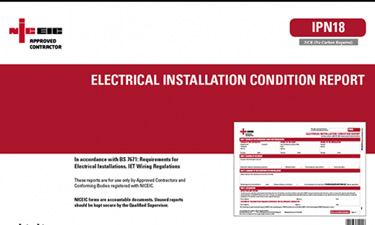Electrical safety within our homes and workplaces is paramount, and one of the key tools in ensuring this safety is the Electrical Installation Condition Report (EICR). But what exactly does an EICR entail, and why is it so important? Let’s delve into the intricacies of this vital test to understand its significance and what it involves.
Understanding the Purpose:
At its core, an EICR is a comprehensive inspection and testing process conducted on electrical installations. Its primary objective is to evaluate the safety and condition of these installations, ensuring they meet the required standards and pose no risks to occupants or properties.
The Inspection Process:
During an EICR, a qualified electrician meticulously examines various components of the electrical system. This includes assessing the integrity of wiring, sockets, switches, and other fixtures. They check for any signs of damage, wear and tear, or potential hazards that could compromise safety.
Testing Procedures:
In addition to visual inspections, EICRs involve rigorous testing procedures to assess the functionality and performance of electrical installations. This often includes tests for earth continuity, insulation resistance, polarity, and operation of protective devices such as circuit breakers and residual current devices (RCDs).
Identification of Issues:
Throughout the inspection and testing process, any issues or defects identified are documented and categorized according to severity. This allows for a clear understanding of the condition of the electrical installation and any necessary remedial actions that may be required to address safety concerns.
Classification Codes:
Commonly used classification codes help to categorize identified issues based on their severity and urgency for remediation:
- Code C1 (Danger Present): Indicates the presence of an immediate danger that requires urgent attention to prevent harm.
- Code C2 (Potentially Dangerous): Highlights issues that present a risk of injury or damage if left unresolved.
- Code C3 (Improvement Recommended): Suggests areas where improvements could enhance safety but do not pose an immediate risk.
Reporting and Documentation:
Following the completion of the inspection and testing process, a detailed report is generated summarizing the findings. This report provides essential information regarding the condition of the electrical installation, any identified issues, recommended actions, and observations made during the assessment.
Compliance and Legal Requirements:
For landlords and property owners, EICRs are not only a matter of safety but also a legal obligation. Regulations stipulate periodic testing and inspection of electrical installations to ensure compliance with safety standards and regulations. Failure to adhere to these requirements can result in penalties and, more importantly, compromise the safety of occupants.
Conclusion:
In essence, an EICR is a vital tool in safeguarding against electrical hazards and ensuring the safety of properties and individuals. By conducting thorough inspections and testing procedures, qualified professionals can identify and address potential issues before they escalate into serious safety concerns. For landlords, property owners, and businesses, investing in regular EICRs is not only a legal requirement but also a proactive measure to protect lives and property from electrical risks.

